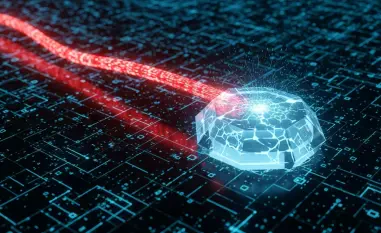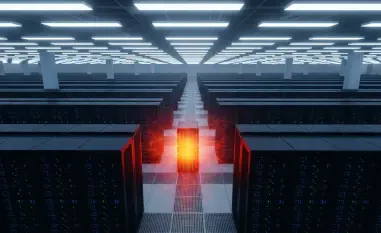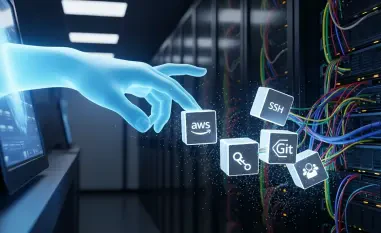Imagine driving along a US highway, unaware that the solar-powered traffic camera overhead might harbor a hidden vulnerability—a rogue radio device capable of serving as a gateway for cyber attackers. This startling reality has emerged as a critical concern for national infrastructure security, with the US Department of Transportation issuing advisories about undocumented radios embedded in solar-powered highway equipment like chargers and weather stations. This roundup dives into the multifaceted risks these hidden components pose, gathering insights from industry leaders and security professionals to explore the cybersecurity challenges, geopolitical implications, and actionable strategies for safeguarding critical systems. The purpose is to provide a comprehensive overview of expert opinions and practical tips to address this pressing issue.
Exploring the Cybersecurity Risks of Hidden Radios
Vulnerabilities in Solar-Powered Infrastructure
Industry experts have highlighted the alarming presence of undocumented radios in solar-powered highway devices as a significant weak point in critical infrastructure. Often embedded by manufacturers for maintenance or remote access, these components can inadvertently create backdoors for malicious actors to exploit. The consensus among security professionals is that while a single device might seem inconsequential, it could potentially allow attackers to infiltrate broader, more secure networks.
Differing views exist on the intent behind these radios. Some specialists argue that their inclusion results from oversight or cost-cutting in design, rather than deliberate malice. Others caution that regardless of intent, the outcome remains the same—an increased risk of unauthorized access that could disrupt transportation systems on a large scale if exploited systematically.
A notable statistic underscores the urgency of this threat: operational technology (OT) ransomware attacks have surged dramatically in recent years, pointing to a growing focus by cybercriminals on infrastructure targets. This trend emphasizes the need for heightened vigilance and robust defenses against such silent vulnerabilities lurking in everyday highway tech.
Operational Benefits Versus Security Trade-offs
The reliance on radio communications in critical sectors like transportation and energy is widely acknowledged as a double-edged sword. On one hand, industry voices praise the efficiency gains from radio-equipped systems, noting their role in enabling real-time data transmission for traffic management and emergency responses. This connectivity has become indispensable for modern infrastructure operations.
On the other hand, security analysts warn that this very connectivity amplifies the potential for widespread disruption. A breach in one device could cascade through interconnected systems, paralyzing entire highway networks. Real-world advisories from government agencies about vulnerabilities in similar technologies, such as railway equipment, serve as stark reminders of the stakes involved in securing these systems.
Balancing these operational benefits with security risks remains a central debate. Some experts advocate for minimizing radio usage to only essential functions, while others suggest that enhanced encryption and monitoring could mitigate threats without sacrificing efficiency. This tension reflects the broader challenge of maintaining functionality in an era of escalating cyber threats.
Geopolitical and Strategic Dimensions
Nation-State Concerns and Supply Chain Risks
Geopolitical tensions add a complex layer to the issue of undocumented radios in highway tech. Many security professionals point to economic rivalries and the potential for nation-state actors to exploit infrastructure vulnerabilities as a driving concern. The reliance on global supply chains, particularly for low-cost components, heightens fears that foreign-made equipment could be preloaded with hidden access points for espionage or sabotage.
Perspectives vary on the immediacy of this threat. Some analysts believe the risk is more long-term, with adversaries mapping critical systems for future exploitation rather than immediate attacks. Others argue that even a small-scale incident could serve as a testing ground for larger operations, making proactive measures essential to counter these strategic dangers.
A key point of agreement is the need for transparency in hardware sourcing. Experts across the board stress that without clear visibility into the origins and components of infrastructure tech, the US remains exposed to unseen risks. This geopolitical shadow underscores the urgency of addressing supply chain dependencies as part of a broader security framework.
Potential for Large-Scale Disruptions
The possibility of coordinated cyber operations targeting multiple devices simultaneously is a growing worry among industry leaders. Unlike isolated breaches, a synchronized attack on highway infrastructure could cripple national transportation networks, causing economic and safety impacts. This scenario is often linked to sophisticated actors with strategic objectives beyond mere financial gain.
Differing opinions emerge on how to prioritize defense against such threats. Some security specialists recommend focusing on individual device hardening, ensuring each unit is secure against tampering. Others argue for a systemic approach, emphasizing network-wide monitoring to detect and block lateral movement by attackers before damage escalates.
Despite these differences, there is a shared recognition that the interconnected nature of modern OT systems amplifies the fallout from even minor vulnerabilities. The potential for large-scale disruptions serves as a stark warning that fragmented or reactive security measures may no longer suffice in protecting critical infrastructure from determined adversaries.
Strategies to Fortify Infrastructure Defenses
Hardware Assessments and Transparency Measures
A common recommendation from security professionals is the urgent need for thorough hardware assessments to identify undocumented radios and other hidden components in solar-powered devices. Implementing hardware bills of materials (BOMs) is frequently cited as a vital step toward achieving supply chain transparency, allowing infrastructure managers to scrutinize every element of their systems.
Beyond identification, some experts suggest adopting a principle of “least functionality” in device programming, stripping away unnecessary features that could be exploited. This approach, while resource-intensive, is seen as a proactive way to minimize attack surfaces in critical equipment, especially in high-stakes environments like highways.
There is also a push for collaboration between government and private sectors to establish stricter supplier standards. Opinions converge on the idea that without rigorous vetting of manufacturers and components, hidden vulnerabilities will persist. These transparency and assessment strategies are viewed as foundational to building trust and resilience in infrastructure tech.
Network Monitoring and Proactive Policies
Continuous network traffic monitoring is another widely endorsed tactic to detect unusual activity that might indicate a breach through undocumented radios. Industry leaders note that real-time analysis can help spot lateral movement within systems, a common tactic used by attackers to escalate access from a single device to an entire network.
Policy-level interventions also feature prominently in expert discussions. Some advocate for federal mandates requiring regular security audits of highway infrastructure, while others believe voluntary industry standards could foster innovation in protective measures without stifling progress. This debate highlights the challenge of aligning regulation with practical implementation.
A shared emphasis across perspectives is the importance of proactive rather than reactive cybersecurity. By investing in monitoring tools and policy frameworks now, infrastructure stakeholders can stay ahead of evolving threats, ensuring that hidden radios do not become the weak link in national security defenses.
Reflecting on Insights and Next Steps
Looking back, the discussions around undocumented radios in US solar highway technology revealed a critical intersection of cybersecurity, operational necessity, and geopolitical strategy. Experts from various corners of the industry provided a spectrum of insights, from identifying vulnerabilities as potential backdoors to weighing the efficiency of radio connectivity against its risks. The geopolitical undertones, coupled with the alarming potential for large-scale disruptions, painted a sobering picture of the challenges faced by critical infrastructure managers.
Moving forward, actionable steps emerged as a clear priority. Conducting comprehensive hardware assessments and adopting transparent supply chain practices stood out as immediate needs to uncover and address hidden threats. Simultaneously, enhancing network monitoring and pushing for robust policy frameworks offered a path to long-term resilience. For those seeking deeper understanding, exploring government advisories on OT security and industry reports on ransomware trends can provide valuable context and further equip stakeholders to tackle this invisible yet pressing danger.













